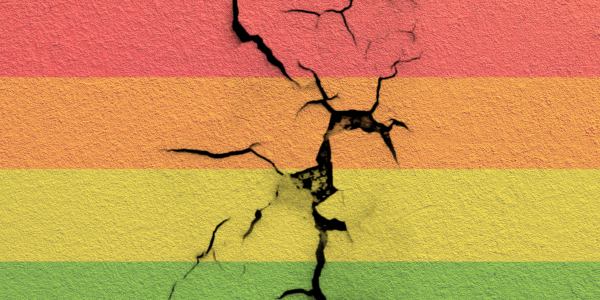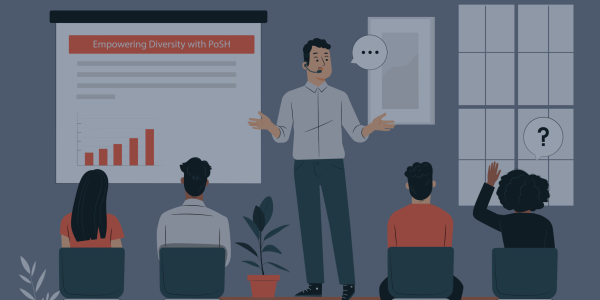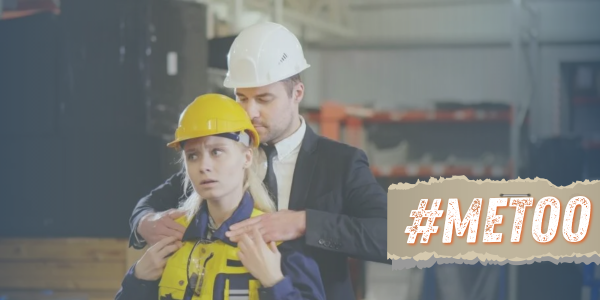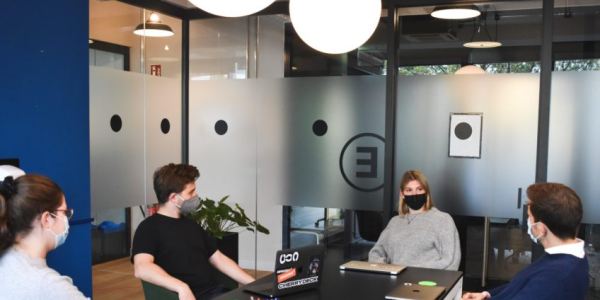Inclusion in the workplace is challenging but not impossible. Captain Raymond Holt from the Brooklyn 99 TV series once said, "Every time someone steps up and says who they are, the world becomes a better and more interesting place." An accurate depiction of a supportive work environment!
When Rosa Diaz, a Brooklyn-based detective, came out as bisexual in front of her squad at work, she was nervous. But, by the end of the episode, her commanding officer, Captain Holt, who is gay himself, tells her how empowering it is to be true to oneself.
The episode ends on a beautiful note. Rosa's co-workers respected her sexual orientation and treated her just the same. The world did become a better place– in the TV sitcom.
They say life imitates art. But, coming out in real life, in a non-inclusive workplace, could be more anxiety-inducing and daunting than what any piece of media could depict. Fortunately, a better place has come to exist in real life too.
Read on as we take you through a few such examples.
The story of Takeyla Benton <>

For Takeyla Benton, a 39-year-old Black woman raised under the Church's strict teachings, the idea of exploring her sexuality wasn't even an option. Not until the pandemic happened, which gave her enough time to rest and contemplate where she stood on the sexuality spectrum.
Due to the prevalence of heteronormative culture and the lack of out-and-out gay representation, the admission of being different from the norm was difficult for her.
Add to that, coming out from the proverbial closet is not one isolated event.
Although it allows a queer person to gain the rightful spotlight of visibility, it also becomes long-term navigation of how they perceive their identity versus how they present it. It is thus a tedious process of traversing safe spaces where they can or cannot be open about their identities.
Ideally, one safe place should be the workspace
The workplace is generally one with the highest stakes for any queer person to navigate, especially considering the lack of employee diversity training that could have softened the coming out process at work. It is saddening that a number as significant as 46% of employees are still reportedly closeted at work in the USA alone. Their biggest fear? Discrimination! Their fears are not without basis! 36% of the LGBTQ+ workforce in the US faces discrimination at the workplace when they do come out. For Takeyla, too, the mere idea of coming out as a black queer woman in a white male-dominated industry was a shuddering thought. In most of her previous jobs as a podcast host and writing coach, she had to fight against racist and sexist microaggressions. LGBTQ+ employees often seek to put on a charade of being heterosexual for the refuge of invisibility. It is a small price to pay for the psychological relief of not being bombarded with derogatory comments, questions, identity policing or simply being ostracized. But those for whom being closeted is not an option, it often brings along a significant risk of workplace harassment and persistent discrimination.
What coming out can do for closeted employees?
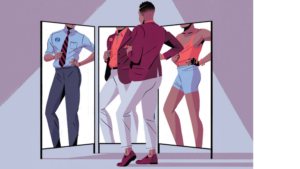
This path of disclosure about identities is loaded with endless struggles. But several studies have also indicated that coming out at work has dramatically improved the emotional and physical well-being of queers. For transgender people, gender affirmation could save their life! But even though being open about their true identities at work would mean less psychological stress for queer people, we have not sensitized our workforces to openly welcome LGBTQ+ people. Instead, they become more prone to the risk of workplace biases. This crossroad is where the benefits and risks intersect. While there are good consequences of coming out at work, are the queer people ready to deal with the unfortunate downsides?
Sexual orientation and gender identities at work
The past few decades have seen an uprise of LGBTQ+ visibility globally. Yet there is not much work done on workplace discrimination due to the different sexual orientations and gender identities. A significant absence of training to ensure inclusion in the workplace is an unfortunate reality Looking at the bigger picture, you will see how LGBTQ+ members pay a hefty price for defying sexual and gender norms. This discrimination originates right from the job search. Did you know that the applications from openly queer people in the USA are seen unfavourably? The current STEM industry has lost 1,21,000 eligible candidates due to bias against the LGBTQ+ community. Additionally, when queer people get hired, they often struggle against workplace harassment, systemic discrimination, ignorance of their colleagues, anxiety, and depression.
Mx. Harris Eddie Hill did not 'belong.'

Harris Eddie Hill, a public speaking coach and a non-binary podcaster from the UK, felt their previous workplaces were never ready or open to someone different. It was mainly like a boys' club where there is no room for you if you don't belong! The colleagues often did not use the correct pronouns, and the company lacked an equity policy for its LGBTQ+ staff. As such, Hill never really found any ground for support. Harris Eddie Hill's experience is not a singular event but a widespread affair. Furthermore, when you look at the Asia Pacific region, this experience worsens.
Open and Blatant Discrimination
In Mainland China, the advertisements by companies openly list how they want their employees to behave in a specific manner that aligns with binary gender norms. This diktat does nothing but further push away the LGBTQ+ community and subtly penalizes them for their gender non-conformation. Additionally, we expect non-binary and trans people to constantly explain their gender identities to others at work, leading to quick burnout. Many members of the LGBTQ+ community end up suffering from never-ending charades of identity policing. The idea of being on the receiving end of their peer's unwarranted opinions pushed Hill to pursue self-employment. They attempted to leave behind the consistent train of jarring remarks and discrimination they faced at their workplace. In the end, queer people are often left to question, 'Is the validation for my identity from others significant enough to bear distressing consequences?'
How can queer people navigate through workspaces?
Coming out can seem like an entire career of its own– one without any pay, yet with the most consistent efforts and a great deal of trouble. For some, coming out can be liberating, allowing them to pursue an authentic life. For others, the risks of coming out at their workplace can range from being badgered with uncomfortable questions to being fired.
The critical question is, how do queer people ensure being their authentic selves without any setbacks?
The only way is to make a safety plan, a net to fall back on. For LGBTQ+ people, it is essential to find out their company's stance regarding LGBTQ+ rights. Figure out what policies and rules the company has to protect its queer employees. Moreover, asking about gender-affirming policies during job interviews and finding out about LGBTQ+ resource groups can be one way to find that safety and solace in the workplace. How can you actively create inclusion in the workplace? Coming out can either be highly freeing or a deeply horrifying experience. The one thing that determines so is the support and acceptance from peers and upper-level management at work. It is not a queer person's responsibility to strive for LGBTQ+ inclusion in the workplace. It is taxing to expect them to become a spokesperson who struggles day in and day out to defend their rightful place in a majorly heterosexual society. An organization like you can put the right foot forward to ensure inclusion in the workplace through policies and work culture. Sure, the constitutional laws currently prevent discrimination against transgender individuals and not the entire LGBTQ+ community. But the question is, how do you actively ensure that the law is met through actions and not simply in words? Start from scratch, and draft workplace guidelines that accept the LGBTQ+ community instead of discriminating against them. Reword your hiring posts and consider removing gender-conforming roles. But this is just scratching the surface, let us explore some more options -
Rainmaker Training Tip: Consult our experts on the existing statutes favouring Transgenders on the national and state level.- Diversity training programs in India Introducing a D,E&I training that specifically addresses the LGBTQ+ community is a great way to create awareness and understanding for every employee who could then actively recognize and correct their attitude towards their queer colleagues.
- Inclusive documents and forms It's easy to forget the gender restrictive language used in most official forms and documents. Hence, it is necessary to review them and ensure that the forms offer self-identifying options to gender non-conforming people.
- Freedom of expression Creating an inclusive environment goes hand in hand with allowing freedom of expression and individuality. For instance, non-binary and transgender employees may feel stifled by gender-conforming dress codes. It's best to allow them to dress in a way they feel comfortable, within the boundaries of professionalism.
- Institute LGBTQ+ support groups Instead of ONLY providing diversity training programs for all, specifically engage with the queer employees through a support group. LGBTQ+ members or a diversity officer can run this to get better results. Additionally, when there is a network of resounding support from people who belong to the same community, the battle of coming out becomes more manageable.
- Host LGBTQ+ events It's hard for queer people to come forward and enquire about specific policies related to them, especially if they are still closeted. So, hosting LGBTQ+ events, anti-harassment workshops, and celebrating Pride month are some ways to publicize your allyship with the community.
- Inculcate inclusive communication It's crucial to keep your assumptions about someone's sexuality and gender identity in check. Assuming everyone is straight or prefers the same binary pronouns can easily create a feeling of alienation for queer employees. Moreover, boxing someone to a specific label owing to their looks, voice, dressing sense, or behaviour should be unacceptable.
- Create personal connections The best way to understand how to eradicate the obstacles arising on the road to inclusivity is through fostering personal connections with LGBTQ+ members who have lived experience. For the upper-level management to forge working partnerships with people not conforming to social norms would help challenge pre-existing assumptions and biases. Additionally, they could help in creating more inclusive policies and regulations. So, set up employee lunches or one-on-one mentorships that allow genuine colleague relationships and enhance understanding.
- Never push a closeted person to come out Coming out is a deeply personal process. So, it is never okay for you to out any of your colleagues or employees without their permission. If a person confides in you about their sexual identity, listen to them, validate their journey and ask them ways to offer support. But, do not breach their privacy by outing them under any circumstance. At a workplace, you can offer time-off or counselling to people who have come out of the closet and need support to adjust to this change!
- Be respectful Most importantly, and easily forgotten of all the things– treat LGBTQ+ with the same dignity and respect as you would give to any other person. It is still the same person, simply with different sexuality and gender identity than your own. Why should that create a hindrance in the way you regard their existence?
Wrapping up
When you actively strive to provide diversity and inclusion in the workplace– everyone wins! Thanks to the supportive work culture, employee satisfaction, productivity, and retention would rise remarkably. Although you cannot assume what a queer person goes through to live their lives authentically, you can surely do your part by implementing the methods we talked about above. Additionally, suppose you need assistance and want to ensure that your workplace strives toward a positive, inclusive direction. Reach out to us and we shall have an expert answer all your queries in the best possible manner. You can also avail any of the following:
- WorkVIBE: an online diversity training module to persuade the audience to eradicate or reduce their unconscious biases
- D,E& I Instructor-Led Workshops: a workshop that enables an organization to foster a greater level of participation from a diverse group of employees.
- Rainmaker's upcoming Microlearning modules on LGBTQ+, Pronouns and Allyship will be available this year. Stay tuned.
Remember, an inclusive and supportive work environment results in a happy workforce! References - https://www.hrc.org/news/hrc-report-startling-data-reveals-half-of-lgbtq-employees-in-us-remain-clos https://www.americanprogress.org/article/state-lgbtq-community-2020/ https://static1.squarespace.com/static/5daf65330e17a4220c7707ce/t/5f7583cef9968a437d393811/1601536975073/2020_Freeman_PIBBS.pdf Author: Sumali Nagarajan DISCLAIMER - No information contained in this website may be reproduced, transmitted, or copied (other than for the purposes of fair dealing, as defined in the Copyright Act, 1957) without the express written permission of Rainmaker Online Training Solutions Pvt. Ltd.
